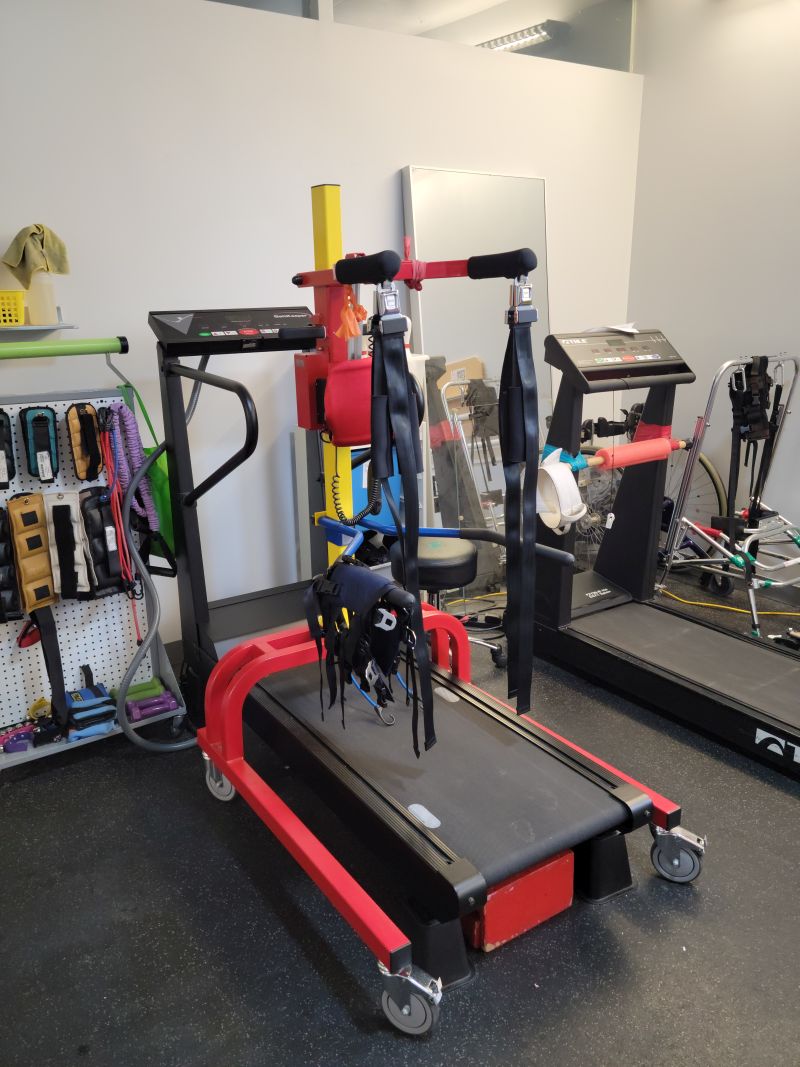Benefits of Cardio Fitness for Children with Cerebral Palsy
by Danielle Burke, PT, DPT
Kids Place West Doctor of Physical Therapy
Cerebral palsy is a complex neurological disorder affecting approximately 1.5 to 3.8 children per 1,000 births. Children diagnosed with cerebral palsy often present with developmental delays as a result of muscle weakness, impaired balance, and poor coordination. These delays affect their mobility, social interactions, and speech. Specific mobility limitations can include reduced speed and endurance when walking in addition to an increased risk of falls. It is estimated that as a result of inactivity and reduced independence, children diagnosed with cerebral palsy are sedentary for 76-99% of their day and less than 18% participate in light physical activity. Individuals living a sedentary lifestyle are at an increased risk for comorbidities such as obesity, diabetes, cardiovascular disease, and osteoporosis.
Physical Therapy for Children with Cerebral Palsy
Physical therapy is an important component of a multidisciplinary team that assists in improving and maintaining mobility throughout the lifespan of those diagnosed with cerebral palsy. While stretching and resistance exercise are pertinent to the overall plan of care, in order to increase independence with mobility, cardiorespiratory fitness also plays a vital role. Both walking on the treadmill and cycling encourage use of large muscle groups and require coordination.
Treadmill for Children with Cerebral Palsy
The treadmill can be an integral part of teaching children diagnosed with cerebral palsy how to walk. It is task-specific and allows the therapist to assist the child in achieving appropriate movement patterns and muscle memory. Treadmill training can be implemented with children of varying ages and degrees of cerebral palsy. A partial body weight supported harness can be added in order to assist children who are not yet walking and allow them to self-correct their form. Furthermore, treadmill training has been shown to not only improve walking, but assist with achievement of other gross motor skills as a result of improved leg strength and postural control.
Cycling for Children with Cerebral Palsy
Riding a bicycle is a typical physical activity in our society. Independently pedaling a tricycle is typically developed around 3 years of age. However, children diagnosed with cerebral palsy can be delayed in their ability to pedal a bicycle as a result of poor coordination and strength. Nevertheless, cycling is a pertinent treatment for these children as it allows for a controlled movement without the added load of body weight as in walking. Additionally, cycling has been shown to improve hip and knee mobility while allowing for ankle stability. Cycling can be performed on both a stationary or dynamic bike with adjustments for postural and limb control making it an adaptive form of exercise for multiple diagnoses, including cerebral palsy. Cycling can also be performed both inside and outside of therapy to improve strength and coordination, thus increasing the likelihood of improving other gross motor skills.
Physical activity is an important part of daily life that reduces our risk of developing comorbidities and thus allows us to live a healthy life. Both walking on the treadmill and cycling allow children, including those diagnosed with cerebral palsy, the opportunity to complete physical activity which improves their energy and increases overall muscle control.
Kids Place Pediatric Therapy has 4 locations in Arizona. Visit our website today to learn how we help children with disabilities through speech therapy, physical therapy, orthopedic therapy and feeding therapy.
References
1.Ryan JM, Cassidy EE, Noorduyn SG, O’Connell N,E. Exercise interventions for cerebral palsy. The Cochrane database of systematic reviews. 2017;6(6):CD011660. doi: 10.1002/14651858.CD011660.pub2.
2.Chrysagis N, Skordilis EK, Stavrou N, Grammatopoulou E, Koutsouki D. The Effect of Treadmill Training on Gross Motor Function and Walking Speed in Ambulatory Adolescents with Cerebral Palsy. American Journal of Physical Medicine & Rehabilitation. 2012;91(9):747-760. doi:10.1097/phm.0b013e3182643eba.
3.Verschuren O, Peterson MD, Balemans ACJ, Hurvitz EA. Exercise and physical activity recommendations for people with cerebral palsy. Developmental Medicine & Child Neurology. 2016;58(8):798-808. doi:10.1111/dmcn.13053.
4.Cho C, Hwang W, Hwang S, Chung Y. Treadmill Training with Virtual Reality Improves Gait, Balance, and Muscle Strength in Children with Cerebral Palsy. The Tohoku Journal of Experimental Medicine. 2016;238(3):213-218. doi:10.1620/tjem.238.213.
5. Mohanty P, Meshram N, Pattnaik M. Comparision Of Dynamic Cycling Vs Static Cycling On Endurance, Balance, And Walking Ability Of Children With Cerebral Palsy. International Journal of Physiotherapy and Research. 2015;3(4):1163-1170. doi:10.16965/ijpr.2015.161.







